Yingjiang Temple: A Journey Through History and Spirituality
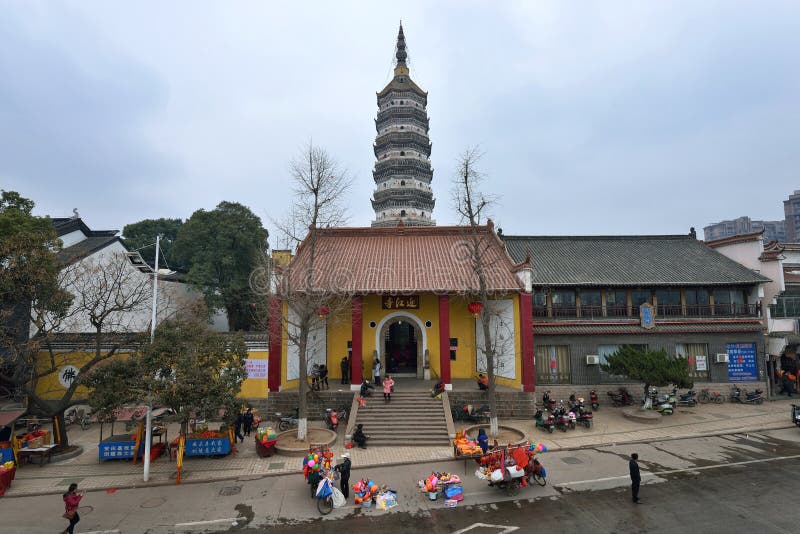
An Essential Guide to Visiting Yingjiang Temple
Nestled along the banks of the mighty Yangtze River in Anqing, Yingjiang Temple (迎江寺) offers travelers a sacred glimpse into China’s rich spiritual heritage and architectural grandeur. With a history that stretches back to 974 AD during the Northern Song Dynasty, this ancient temple has withstood the test of time, embodying resilience and reverence. Originally known as Huguo Yongchang Temple and later as Wanfo Temple, it has been a site of worship and reflection for centuries, attracting both pilgrims and tourists alike.
As you approach the temple, the grandeur of its ancient structures envelops you, each hall and pavilion telling stories of devotion and artistry. The impressive mountain gate, adorned with the three golden characters of “Yingjiang Temple” penned by Emperor Guangxu of the Qing Dynasty, sets the tone for an unforgettable visit. Here, you can explore sacred spaces filled with nearly 500 statues of deities, intricate carvings, and historical relics, including a treasured golden edition of the “Miaofa Lotus Sutra.”
Beyond its architectural splendor, Yingjiang Temple is intimately connected to the cultural fabric of Anqing. The legends surrounding the temple, such as its symbolic iron anchors that hold the spirit of the city, weave an enchanting narrative that resonates with visitors. Whether you’re seeking spiritual solace, a deeper understanding of Chinese culture, or simply a place of tranquility, Yingjiang Temple promises a rich experience that will linger in your heart long after your visit. Don’t miss the chance to immerse yourself in this historical gem, where the past and present harmoniously coexist amid the lush scenery of the Yangtze River.
In This Guide
- An Essential Guide to Visiting Yingjiang Temple
- The Rich History and Legends of Yingjiang Temple
- Main Highlights: What You Absolutely Can’t Miss
- Planning Your Visit: A Practical Guide
- Tickets: Prices, Booking, and Tips
- How to Get There: A Complete Transportation Guide
- Local Cuisine and Accommodation Nearby
- Frequently Asked Questions
- Final Thoughts on Your Trip
The Rich History and Legends of Yingjiang Temple
Nestled along the banks of the majestic Yangtze River, Yingjiang Temple (迎江寺) is a revered historical site that encapsulates the rich tapestry of Chinese culture and spirituality. Its origins trace back to the Northern Song Dynasty, specifically the seventh year of Kaibao (974 AD), when it was initially established as Huguo Yongchang Temple, later becoming known as Wanfo Temple. Over the centuries, the temple has undergone several transformations, reflecting the ebb and flow of history.
In 1619, during the Ming Dynasty, a significant reconstruction was undertaken by a local benefactor, Ruan Zihua. This effort not only restored the temple but also enhanced its architectural grandeur, which today is characterized by ornate halls, pavilions, and beautifully landscaped gardens. Covering an impressive 22,000 square meters, the temple complex is a harmonious blend of ancient design and spiritual ambiance, making it a focal point for both worship and tourism.
One of the most striking aspects of Yingjiang Temple is its connection to the Yangtze River. According to local folklore, the layout of Anqing resembles a boat, with the temple tower acting as its mast. This whimsical imagery is further emphasized by the large iron anchors flanking the temple’s entrance, symbolizing the need to ground the city and prevent it from drifting away with the currents of time. These anchors, weighing nearly three tons each, are a rare sight in temples, adding an element of intrigue to the site.
The temple’s architectural features are equally captivating. Visitors are greeted by the mountain gate adorned with three golden characters of “Yingjiang Temple,” inscribed by Emperor Guangxu of the Qing Dynasty. The entrance showcases a marble ticket booth embellished with a relief of a four-clawed dragon, while the majestic Hall of Heavenly Kings houses a statue of Maitreya Buddha, flanked by the four heavenly kings in dynamic poses.
As you venture further into the temple, you’ll ascend a series of 28 steps leading to the Daxiong Hall, where a plaque by the notable scholar Zhao Puchu welcomes visitors to a space filled with reverence. Beyond that lies the Pilu Hall, home to the revered Vairocana Buddha, surrounded by the two heavenly kings, Disha and Dafan, who stand as guardians of the sacred space.
The Sutra Collection Building adds another layer of historical significance to Yingjiang Temple, housing treasured scriptures, including a gold-embossed edition of the “Miaofa Lotus Sutra,” gifted by Emperor Guangzong during the Ming Dynasty. This collection not only reflects the temple’s spiritual importance but also serves as a repository of Chinese literary heritage.
With nearly 500 statues of deities and Buddhas gracing its halls, Yingjiang Temple is a sanctuary of faith and artistry. Among its treasures are two golden plaques awarded by Emperor Qianlong and Empress Dowager Cixi, symbolizing the temple’s enduring legacy through the ages.
Visiting Yingjiang Temple offers a unique opportunity to immerse oneself in the deep-rooted traditions of Chinese Buddhism while appreciating the breathtaking views of the Yangtze River. The temple stands as a testament to the resilience of history, a beacon of spirituality, and a cultural landmark that continues to inspire both locals and travelers alike.
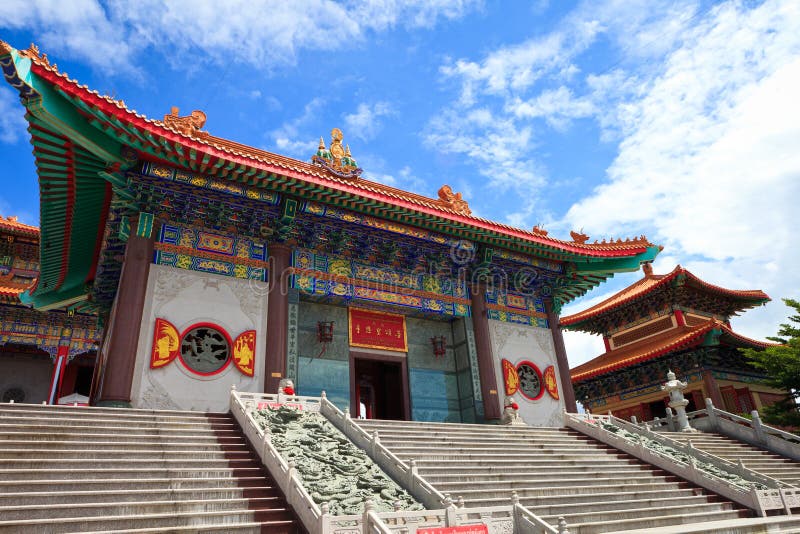
Yingjiang Temple.
Main Highlights: What You Absolutely Can’t Miss
Yingjiang Temple, a stunning testament to the rich history and cultural heritage of Anqing, is a must-visit destination for international travelers. Nestled alongside the majestic Yangtze River, this ancient temple complex offers a blend of spiritual significance, architectural beauty, and breathtaking views. Here are the key highlights that you absolutely cannot miss during your visit:
1. Historical Significance
Originally established in 974 AD during the Northern Song Dynasty, Yingjiang Temple has withstood the test of time, experiencing various reconstructions, particularly during the Ming and Qing dynasties. The temple’s history is intricately tied to the local community and its evolution over centuries, making it a fascinating site for history enthusiasts.
2. Architectural Marvel
Spanning an impressive 22,000 square meters, the temple complex features an array of ancient structures including halls, pavilions, and gardens. The grandeur of the architecture is highlighted by the three golden characters of “Yingjiang Temple,” inscribed by Emperor Guangxu, which adorn the main gate. The intricate details and harmonious layout of the temple promise to captivate any visitor.
3. Zhenfeng Pagoda
One of the temple’s most striking features is the Zhenfeng Pagoda, often referred to as the “First Pagoda on the Yangtze River.” This octagonal tower offers panoramic views of the river and the surrounding landscape. Climbing to the top is a rewarding experience, as you can soak in the beauty of the Yangtze flowing beneath you, surrounded by the historical charm of Anqing.
4. Sutras and Statues
Inside the temple, you will find the Sutra Collection Building, which houses precious texts including the “Miaofa Lotus Sutra,” gifted by Emperor Guangzong of the Ming Dynasty. Additionally, nearly 500 statues of various deities populate the halls, each telling a story of devotion and reverence. These sacred relics provide a glimpse into the spiritual practices of the region.
5. The Hall of Heavenly Kings
As you enter the temple, make sure to visit the Hall of Heavenly Kings, where Maitreya Buddha and the four heavenly kings await. The striking expressions of the statues and the serene atmosphere invite moments of reflection, making it a perfect spot for those seeking tranquility.
6. Cultural Experience
Yingjiang Temple is not just a historical site; it is a vibrant part of the local community. Visitors can witness monks engaged in daily rituals, offering a glimpse into the spiritual life that continues to thrive within these ancient walls. While photography is prohibited inside the temple to preserve its sanctity, the memories created here will last a lifetime.
7. Breathtaking Views
The temple’s location on the banks of the Yangtze River provides stunning scenery, especially at sunset. The reflection of the temple against the river creates a picturesque scene, perfect for moments of contemplation or simply enjoying the beauty of nature.
8. Local Folklore
Immerse yourself in local legends, such as the tale of the temple’s iron anchors, which symbolize the city’s stability. According to folklore, the unique terrain of Anqing resembles a boat, and the pagoda serves as its mast. These stories add an enchanting layer to your visit, connecting you with the cultural fabric of the region.
Conclusion
Yingjiang Temple is more than just a historical landmark; it is a place where history, spirituality, and community converge. Whether you are a history buff, a spiritual seeker, or simply a curious traveler, this temple promises an enriching experience that will deepen your understanding of Anqing’s cultural heritage. Don’t miss the chance to explore this enchanting site during your travels!
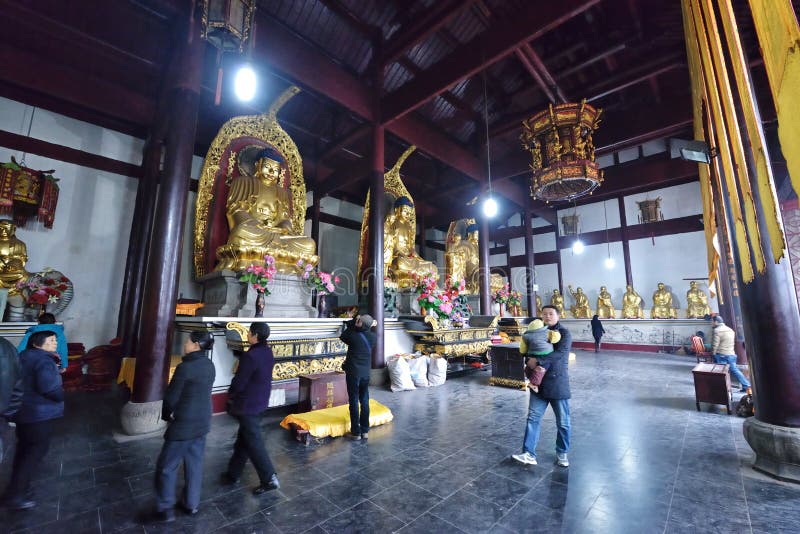
Yingjiang Temple.
Planning Your Visit: A Practical Guide
Visiting Yingjiang Temple is a captivating journey into history, culture, and spirituality, set against the stunning backdrop of the Yangtze River. This guide will help you navigate your visit, ensuring you make the most of your time at this revered site.
Getting There
Yingjiang Temple is conveniently located in Anqing City, on the banks of the Yangtze River. The address is No.148 Yanjiang East Road, Yingjiang District, Anqing 246003, China.
-
By Air: The nearest airport is Anqing Tianzhushan Airport, which is about 15 kilometers from the city center. From the airport, you can take a taxi or a pre-arranged shuttle service to reach the temple.
-
By Train: Anqing Railway Station is well connected to major cities in China. Once you arrive, local taxis are available for hire, or you can take the city bus to Yingjiang District.
-
By Bus: Anqing has a well-established bus network. Look for buses heading to Yingjiang District, which often stop near the temple.
Opening Hours and Ticketing
Yingjiang Temple is open daily, but hours may vary depending on the season. Typically, the temple opens around 8:00 AM and closes by 5:00 PM.
- Admission Fee: Entrance to the temple is usually around ¥10 (approximately $1.50 USD). Be sure to have some cash on hand, as not all places accept credit cards.
What to Expect
Yingjiang Temple is not only an architectural marvel but also a spiritual haven. Here’s what you can look forward to:
-
Architectural Highlights: The temple complex spans 22,000 square meters and features stunning ancient structures, including the Hall of Heavenly Kings and the Daxiong Hall. The intricate carvings and historical relics, such as the golden plaques bestowed by Qing Dynasty emperors, are must-see attractions.
-
Cultural Significance: Established during the Northern Song Dynasty (974 AD), the temple has deep historical roots. You’ll notice the unique iron anchors at the entrance—symbols of the city’s connection to the Yangtze River, as local lore suggests that the city resembles a ship.
-
Spiritual Atmosphere: Visitors come not only to admire the architecture but also to pray. Respect the sanctity of the space—photography is generally prohibited inside the temple halls.
Best Time to Visit
The ideal time to explore Yingjiang Temple is during the spring (March to May) and autumn (September to November) months when the weather is mild and pleasant. Summers can be hot and humid, while winters may bring colder temperatures.
Nearby Attractions
Make the most of your visit by exploring these nearby attractions:
-
Zhenfeng Pagoda: Located within the temple grounds, this octagonal tower offers panoramic views of the Yangtze River and Anqing city.
-
Tianzhu Mountain: A short trip from the temple, this Geopark is perfect for nature lovers, offering trails and stunning scenery.
-
Huangmei Opera: Immerse yourself in local culture by catching a performance at a nearby theater.
Local Cuisine
No visit to Anqing is complete without sampling the local cuisine. Be sure to try:
- Soup Dumplings: A local favorite, bursting with flavor.
- Bearded Lobster: Known for its delicious garlic noodles.
- Traditional Anqing Snacks: Explore street food stalls for unique offerings.
Tips for an Enjoyable Visit
- Dress Appropriately: As a place of worship, it’s advisable to dress modestly.
- Stay Hydrated: Bring water, especially if visiting during the warmer months.
- Respect Local Customs: Be mindful of local traditions and practices while within the temple.
Accommodation Options
If you wish to extend your stay in Anqing, consider these accommodations:
- Anqing Fengda International Hotel: Offers comfortable lodging and is well-located for exploring the city.
- Local Guesthouses: For a more authentic experience, consider staying at a guesthouse where you can interact with locals.
By following this guide, you can ensure a memorable visit to Yingjiang Temple, immersing yourself in the rich history and culture of this fascinating destination. Enjoy your journey!
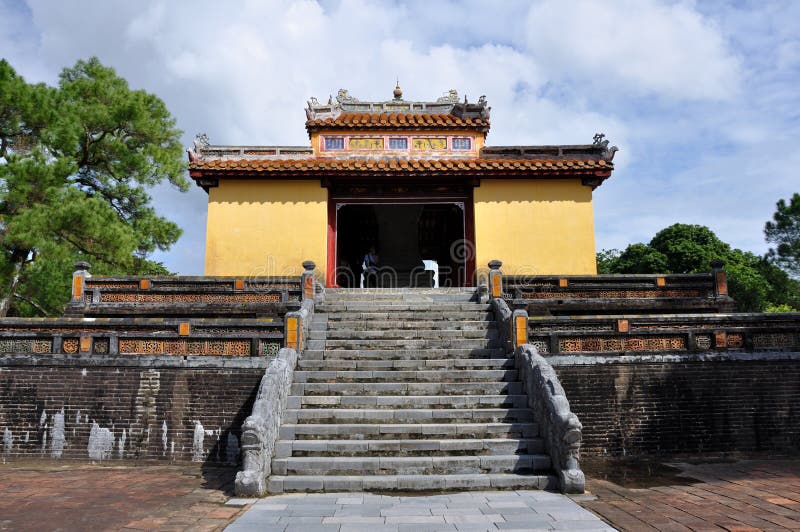
Yingjiang Temple.
Tickets: Prices, Booking, and Tips
Visiting Yingjiang Temple is a journey into the spiritual heart of Anqing, where ancient architecture and rich history come together. Here’s everything you need to know about tickets, prices, booking, and some handy tips for your visit.
Ticket Information
-
Entry Fee: The admission ticket to Yingjiang Temple is quite affordable, generally priced at around ¥10 (approximately $1.50 USD). This small fee grants you access to explore the temple’s stunning halls and pavilions, each steeped in history.
-
Discounts: Keep an eye out for potential discounts for students, seniors, or group bookings, which can sometimes be available at the ticket counter.
Booking Tickets
-
On-site Purchase: Tickets can be easily purchased at the entrance of the temple. There’s typically no need for advance booking, making it convenient for spontaneous visits.
-
Guided Tours: If you prefer a more in-depth experience, consider joining a guided tour. Many local travel agencies offer packages that include transportation, a knowledgeable guide, and sometimes additional attractions in the area. Booking these tours in advance can save you time and ensure availability.
Tips for Your Visit
-
Best Time to Visit: The temple is particularly beautiful at dawn and dusk, when the lighting enhances its architectural features. Early mornings are also less crowded, allowing for a more peaceful exploration.
-
Photography Rules: Be mindful that photography is generally prohibited inside the temple to maintain its sacred atmosphere. However, the exterior offers stunning photo opportunities, especially with the Yangtze River as a backdrop.
-
Respect Local Customs: As a functioning temple, it’s important to be respectful of those who come to pray. Maintain a quiet demeanor and observe local customs, such as bowing when entering the main halls.
-
Plan Your Route: Allocate about 1 hour to fully appreciate the temple. This allows time to stroll through its various sections, including the Hall of Heavenly Kings and the Sutra Collection Building.
-
Accessibility: The temple is located near the Yangtze River, making it easy to combine your visit with a riverside stroll or other nearby attractions like the Zhenfeng Pagoda.
-
Transportation: If you’re staying in Anqing, local buses and taxis are available for transport. The bus to downtown Anqing typically costs around ¥3, making it an economical option for getting around.
By keeping these details in mind, your visit to Yingjiang Temple will be both enriching and enjoyable, immersing you in the serene beauty of this historical landmark.
How to Get There: A Complete Transportation Guide
Reaching Yingjiang Temple, a stunning historical site nestled along the banks of the Yangtze River in Anqing, is a journey that unfolds with simplicity and charm. Whether you’re arriving from nearby cities or traveling from afar, this guide will help you navigate your way to this spiritual landmark seamlessly.
By Air
The nearest airport to Yingjiang Temple is Anqing Tianzhushan Airport (AQG), located approximately 15 kilometers from the city center. This airport primarily handles domestic flights, so you may need to connect through larger hubs like Shanghai or Beijing, depending on your location.
From Anqing Tianzhushan Airport:
- Taxi: The most convenient way to reach the temple from the airport is by taxi. The ride typically takes about 30 minutes and costs around ¥40-¥60.
- Airport Shuttle: If available, shuttle services can take you to central Anqing, where you can catch a local bus or taxi to the temple.
By Train
Anqing is well-connected by rail, making it easy to reach from various cities in China.
Main Train Station:
- Anqing Railway Station: Located in the city, this station services high-speed and regular trains from major cities such as Shanghai, Wuhan, and Nanjing.
From Anqing Railway Station:
- Local Bus: Take the Dananmen Line bus from the station to downtown Anqing. The fare is around ¥3.
- Taxi: A taxi ride from the station to Yingjiang Temple will take about 10-15 minutes and generally costs around ¥15-¥25.
By Bus
If you’re traveling from nearby cities, long-distance buses are a popular option. Anqing has several bus stations, including the Anqing Long-distance Bus Station, which connects with various destinations.
From the Bus Station:
- Local Transport: Upon arrival, you can either take a taxi or use local buses to reach the temple. The taxi fare will be similar to that from the train station.
- Walking: If you’re staying nearby, the temple is within walking distance from many of the city’s central accommodations.
Local Transportation
Once in Anqing, navigating to Yingjiang Temple is straightforward:
– Taxis: Readily available and relatively inexpensive, taxis are a great option for reaching the temple directly.
– Bicycles and E-scooters: Many areas in Anqing are bicycle-friendly, and renting a bike or e-scooter can be an enjoyable way to explore the city and reach the temple.
Accessibility
Yingjiang Temple is located at No. 148 Yanjiang East Road, and while the site is accessible, visitors with mobility challenges may want to confirm specific accessibility arrangements in advance, especially regarding paths and entry points.
Tips for Your Visit
- Plan Ahead: Check the weather before your visit, as it can influence travel conditions.
- Timing: Try to visit during the early morning or late afternoon for fewer crowds and a more serene experience at the temple.
- Local Currency: Keep some cash handy for small purchases, as not all places may accept cards.
By following this guide, you’ll find that getting to Yingjiang Temple is not only simple but also part of the adventure that enriches your travel experience in Anqing. Enjoy your journey to this remarkable site that echoes with history and spirituality!

Yingjiang Temple.
Local Cuisine and Accommodation Nearby
When visiting Yingjiang Temple, not only can you immerse yourself in its rich history and stunning architecture, but you can also indulge in the delightful local cuisine and comfortable accommodations nearby. Whether you’re looking for a quick bite after exploring the temple or a cozy place to rest for the night, Anqing has plenty to offer.
Local Cuisine
-
Weijia Lane Soup Dumplings
Just a short stroll from the temple, this local favorite serves up steaming baskets of soup dumplings that are bursting with flavor. Dipped in Zhejiang vinegar, these dumplings are a must-try for any food lover. Expect to pay around ¥15 for a basket, and be prepared to savor every bite in a charming, bustling atmosphere. -
Bearded Lobster on Yanjiang Road
If you’re in the mood for a seafood feast, head to Yanjiang Road where you can hunt for the famous “Bearded Lobster.” This dish, often served with garlic noodles, is a local delicacy that you simply cannot miss. Average prices are around ¥60 per person, making it a delicious yet affordable dining option. -
Local Night Markets
Anqing is renowned for its vibrant night markets where you can sample an array of street food like spicy crayfish, grilled skewers, and sweet rice balls. The lively ambiance and the variety of options make it the perfect setting for an unforgettable culinary adventure. Don’t forget to grab a drink from one of the many stalls to complement your meal!
Accommodation Nearby
-
Anqing Fengda International Hotel
This well-rated hotel offers modern amenities and comfortable rooms, making it a great choice for travelers seeking convenience and comfort. Located just a short distance from Yingjiang Temple, it provides easy access to local attractions. The hotel features a restaurant where you can enjoy breakfast before a day of exploration. -
Jinjiang Inn Anqing
A budget-friendly option, Jinjiang Inn provides clean and comfortable accommodations with essential amenities. Its strategic location allows for quick access to both the temple and the nearby markets, making it ideal for those who want to experience the local culture without breaking the bank. -
Home Inn Plus Anqing
For a cozy and welcoming atmosphere, Home Inn Plus is a fantastic pick. With spacious rooms and a friendly staff, this hotel offers a relaxing environment after a day of sightseeing. Plus, it’s conveniently located near public transport, making it easy to explore more of Anqing.
Final Thoughts
Whether you’re indulging in Anqing’s culinary delights or enjoying a restful night’s sleep, the area surrounding Yingjiang Temple is rich with options. Take the time to savor the local flavors and find a comfortable place to unwind, enhancing your travel experience in this historic city.
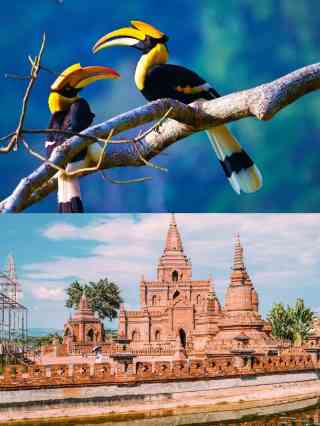
Yingjiang Temple.
Frequently Asked Questions
-
What is the best time to visit Yingjiang Temple?
The ideal time to visit Yingjiang Temple is during spring (March to May) and autumn (September to November) when the weather is mild and pleasant. These seasons also offer beautiful natural scenery that enhances the temple’s serene atmosphere. -
How do I get to Yingjiang Temple?
Yingjiang Temple is conveniently located in Anqing City, along the banks of the Yangtze River. You can reach it by taking a taxi or public bus from the city center. If you’re arriving by train, Anqing Railway Station is a short drive away. -
Is there an entrance fee for Yingjiang Temple?
Yes, there is a nominal entrance fee of around ¥10. This fee grants you access to the temple grounds and allows you to explore its stunning architecture and historical artifacts. -
Are there any restrictions on photography within the temple?
Photography is strictly prohibited inside the temple to maintain a respectful atmosphere for worshippers. However, you are welcome to take photos of the temple’s exterior and the surrounding scenery. -
What should I wear when visiting Yingjiang Temple?
It is recommended to dress modestly when visiting Yingjiang Temple. Comfortable shoes are advisable as you may need to walk up steps and explore the temple grounds. -
Can I participate in any ceremonies or prayers at the temple?
Yes, visitors are welcome to participate in certain ceremonies and prayers. You may observe local worshippers and even join in, but be sure to follow the guidance of the temple monks and maintain a respectful demeanor. -
What facilities are available at Yingjiang Temple?
Yingjiang Temple offers basic facilities, including restrooms and a small area for refreshments nearby. However, there are no extensive dining options within the temple grounds, so consider enjoying a meal in the city before or after your visit. -
Is Yingjiang Temple accessible for individuals with mobility challenges?
While some areas of the temple are accessible, the historic nature of the site means that there are steps and uneven pathways. It is advisable to contact the temple administration in advance to inquire about specific accessibility options available on the day of your visit.
Final Thoughts on Your Trip
As your journey draws to a close, reflecting on your time at Yingjiang Temple offers a profound sense of connection to both the past and the present. This magnificent temple, steeped in history and adorned with intricate architecture, stands as a testament to the resilience of culture and spirituality along the banks of the Yangtze River. Each corner of the temple whispers stories of ancient dynasties, while the serene atmosphere invites moments of introspection and peace.
While visiting, let the gentle sounds of the river and the ethereal beauty of the temple envelop you, creating lasting memories amidst the vibrant local culture of Anqing. Whether you’re marveling at the grand halls or quietly observing the local monks, every experience here enriches your understanding of Chinese heritage.
As you step away from the temple, carry with you the tranquility and inspiration that this sacred place imparts. May your travels continue to be filled with wonder and discovery, and may Yingjiang Temple remain a cherished highlight of your adventures in China. Safe travels!